
I often wonder if “best practice” is actually a hidden drug within our organizations that everyone simply craves to be taking.
Continue reading “Are you dependent on other’s best practices?”
Building Your Innovation Intelligence
Bringing my thinking and solutions to your problems


Following on from my last post of “Place your future bets- invest in Innovation Capital” which outlined the significant contribution innovation capital plays in our economic growth and value enhancement, let’s explore some more.
Let me offer some further thoughts on its value to really capture and understand, so we can measure it within our organizations.
We have the three components; of physical capital, knowledge capital and human capital that are the innovation-related assets, these make-up Innovation Capital.
I have been arguing that innovation capital draws from the core of intellectual capital and its suggested (and broadly recognized) components of human, structural and relational capitals or social capital.
I have previously discussed this converging up, as the ‘nesting effect’
Innovation capital needs assessing and measuring so we can understand the relationship between these innovation capitals (and their present and future potential) and organization performance. We need to know the innovation capital ‘stock’.
Why, well ‘stock’ can be ‘static’ and we need to make this more ‘dynamic’ so innovation can ‘flow’ from this constant renewing of our capitals and be transformed into new value.
Continue reading “Exploring the Value Of Your Innovation Capital”
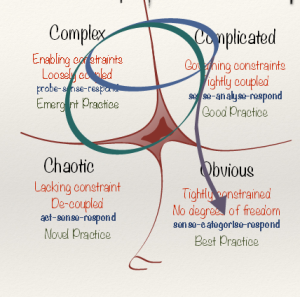
Firstly a very brief explanation of the Cynefin Model and why I find it highly valuable for innovation management.
Innovation has many characteristics of a complex adaptive system as I have crudely attempted to explain here.
The three primary states within the Cynefin framework are Ordered Systems (including Obvious and Complicated), Complexity and Chaos.
Order is split into two, as this handles a key difference in human knowledge between those states, where the cause and effect relationship is obvious and those where it requires greater analysis or expertise.
Exploring a process of emergent discovery for innovation
Most innovators are working in and certainly are far more familiar with the ordered domains, for ‘obvious’ innovations that extend, enhance or evolve their existing products and services.
Equally, they understand their more specialised place and contribution to be growing in their comfort, in the part they play in the more ‘complicated’ domain, where expertise, dedicated focus and specialization are often required or called upon.
Continue reading “The Use of the Cynefin Model for Innovation Management”
 One of those defining extracts I came across many years back, as it is one that has shaped much of where I believe innovation needed to go, let alone where I believe it still does.
One of those defining extracts I came across many years back, as it is one that has shaped much of where I believe innovation needed to go, let alone where I believe it still does.
It is a pathway I want to continue to travel along and will constantly try to encourage others to equally take the walk.
I was working through a set of presentation files today and came across this extract again and thought I must share this. It rings true as much as it did those years back.
“Strategy is useless without innovation; innovation is directionless without strategy”.
Continue reading “The Ability to Move Innovation from the Existing to the Preferred”
 This week I tuned into the Pipeline virtual conference for product development practitioners and gained an encouraging feeling that innovation is progressing along nicely.
This week I tuned into the Pipeline virtual conference for product development practitioners and gained an encouraging feeling that innovation is progressing along nicely.
Packed all within a day there was plenty of material ‘fodder’ to feed off of and learn from.
A really good conference but what quickly followed was a strong dose of that withering on the innovation vine.
I read two consulting surveys on innovation
I’ve been suddenly pulled out of my virtual bubble back into the harsh realities of where innovation really is. Just simply how innovation is struggling and that lies far more at the top of our organizations than below, those below who are simply trying to ‘get on with the job’ but with at least one hand (or even two) tied behind their backs.
I have been reading two sets of observations, one from Fahrenheit 212, the other from Innosight and my mood began to change. I’m suddenly back in reality where we have this huge gap between those ‘working’ innovation and those at the top simply not engaging with innovation or still failing to understand it or even failing to connect the dots.
Continue reading “I wonder who is withering on the innovation vine?”
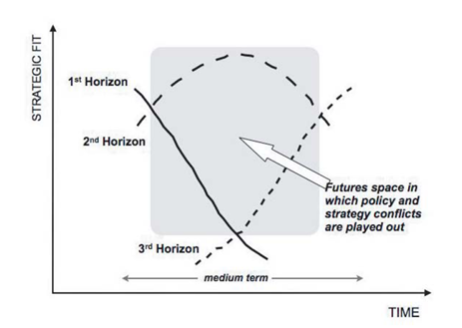 Within our ‘business as usual’ attitudes lie the seeds of destruction. Today there is a relentless pace; we are facing stagnation in many maturing markets.
Within our ‘business as usual’ attitudes lie the seeds of destruction. Today there is a relentless pace; we are facing stagnation in many maturing markets.
We place a disproportionately high amount of our resources in the ‘here and now’ to defend what we have and what we know. A potential ‘big mistake’
We actually subvert the future to prolong the life of the existing.
We constantly look to make it more efficient and more effective but this is in the majority of cases just incremental in what we do, both in innovation and our activities. These are often simply propping up the past success instead of shifting the resources into the investments of the future.
Spotting signs of innovating decay
Within the Three Horizon framework for innovation the horizon two is beginning to address some of the current decay arising from the core within the existing activities (or system). Here we have the highest tension point as it is the place for transformation to take shape and form.
Continue reading “Traversing across into horizon 2 for new breaking innovations”
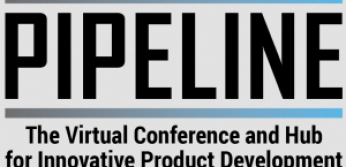 So what are you doing this Friday, June 6th 2014 to help in your innovation pipeline thinking?
So what are you doing this Friday, June 6th 2014 to help in your innovation pipeline thinking?
Fancy joining me and up to 2,000 others that are expected for an Innovation virtual conference.
One that has been constructed around an agenda, made up of a seemingly good mix of practitioners, a key-note or two and product development experts working through the end-to-end product development process, or selected bits of it, in a one-day event.
Crossing over the crossroads of conferences
Innovation conferences are for me at least, at a crossroads. I find many jaded, struggling to justify the costs and commitment of time we need to put in to participate, often in one way dialogues.
Continue reading “Make Virtual Room In Your Innovation Pipeline”
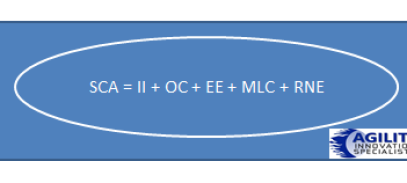 I’ve strongly believed when you begin to think through a framework for innovation, see my last article as an example, you also should equally need to recognize the capability framework that you will need to build into this.
I’ve strongly believed when you begin to think through a framework for innovation, see my last article as an example, you also should equally need to recognize the capability framework that you will need to build into this.
Working through these as essential combinations can become the real enabler.
Here is my solution that I think is worth working through, to firstly absorb and then consider for applying to your own innovation building activity. Try it!
I have worked on a formula SCA = II + OC + EE + MLC + RNE for this. I have never published the make-up of this in the public domain before, although I had briefly outlined it in a past post here.
In that post I outlined my thinking and I do not think it needs repeating, does it? So onward…….
Continue reading “Building an innovation framework that has real capabilities as its formula as its heart.”
 What is striking me recently is the upsurge in the software being specifically designed for managing innovation within our organizations.
What is striking me recently is the upsurge in the software being specifically designed for managing innovation within our organizations.
The competition seems to be warming up in the more ‘standalone’ out-of-the-box segment and the innovative tools being provided are certainly accelerating the innovation process.
The software being provided is going well beyond the simply mining and capturing of promising ideas. The solutions are moving into sound idea enrichment, evaluation processes and managing a portfolio of innovation in more holistic ways.
The providers here, namely Hype, Brightidea, Spigit, Imaginatik and a growing group of others have been significantly improving their ‘front end’ offerings to capture and develop concepts
They are increasingly turning their attentions to the ‘back end’ and support with a greater focus on governance, knowledge repositories, campaign cockpits, evaluation and dialogue exchange mechanisms. Mobility has also been a growing feature to capture innovation ‘on the go’.
Continue reading “Are we moving towards integrated software for innovation management?”
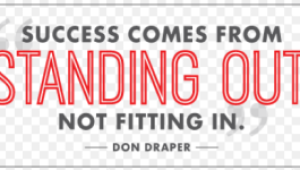 I seem to be reading a lot about the concept of value creation recently.
I seem to be reading a lot about the concept of value creation recently.
It seems to have the same ‘heady vaulted position’ as innovation in that we all talk far more about the ‘promise’ of it. So what is behind value creation?
What drives it? What will allow us to stand out as the place to invest in?
So what is value creation?
Value creation is highly dynamic, it is going on all the time and can increase, decrease or transform in different ways when you exploit your different capitals that will change and reflect your organization’s business activities and eventual outputs.
This is when you can begin to see the value created by the use of deploying all the capitals.
Continue reading “So what drives value creation?”